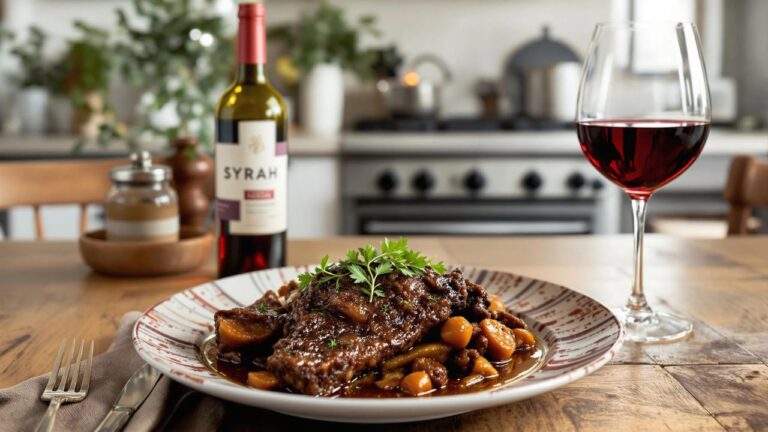Sherry vs Marsala: Differences in Flavor, Varieties & Culinary Uses
Ever found yourself staring at a recipe, wondering if you can swap out sherry for Marsala without ruining dinner? You’re not alone. These two cooking wines might seem interchangeable, but they each bring their own unique flair to the table.
Sherry and Marsala aren’t just fancy names to impress your dinner guests—they’re key ingredients that can make or break a dish. Whether you’re whipping up a savory chicken Marsala or a rich sherry-infused sauce, knowing the difference can elevate your culinary game. So, let’s dive in and uncover what sets these two apart and how to use them like a pro.
Intro to Sherry and Marsala
Overview of Fortified Wines
Fortified wines, like Sherry and Marsala, have a unique twist—they’re blended with distilled spirits, usually brandy, which boosts their alcohol content. This fortification not only increases their longevity but also adds complexity to their flavor profiles. You’ve got options like Madeira from Portugal, known for its robust and versatile nature in cooking, and Port, typically enjoyed as a dessert wine for its sweetness. Each of these wines comes from distinct regions, bringing local grape varieties and terroir into play.
Origin and Production Methods
Sherry and Marsala both have rich histories deeply rooted in their regions. Sherry originates from the Jerez region of Spain and dates back to the 16th century. The primary grape for dry Sherry is Palomino, while sweeter varieties use Pedro Ximenez or Moscatel grapes. A unique aging process called the solera system blends younger wines with older vintages, contributing to Sherry’s diverse flavor spectrum from dry and nutty to rich and sweet.
Marsala, on the other hand, hails from Sicily, Italy, and offers a robust, caramelized character. It’s produced using local grapes like Grillo, Inzolia, and Catarratto. The wine comes in both dry and sweet versions, making it versatile in cooking, particularly for sauces and desserts. This fortified wine adds a distinct depth to dishes, enhancing their overall flavor profile.
In both cases, the unique combination of local grape varieties, terroir, and traditional production methods gives Sherry and Marsala their distinct identities.
Key Differences Between Sherry and Marsala
Flavor Profiles
Sherry flavors can range quite a bit depending on the type. For example, Fino and Manzanilla are light and dry with almond notes, while Amontillado offers a medium body with hazelnut and caramel. Oloroso presents a fuller body often with walnut and dried fruit flavors. The Flor yeast used in aging Sherry imparts unique characteristics, making Sherry complex and varied.
Marsala, in contrast, generally presents a sweeter flavor profile, although dry versions exist too. Sweet Marsala typically features notes of apricot and vanilla. Dry Marsala has a subtler, more complex taste, often showing hints of nuts and brown sugar. As Marsala ages, its flavors deepen, developing rich caramelized notes. This creates a bold, warm profile distinct from Sherry.
Common Uses in Cooking and Beverages
In cooking, Sherry adds depth and complexity to dishes. Use dry Sherry in seafood recipes, soups, and sauces for a nutty undertone. Sweeter Sherries like Pedro Ximenez can enhance desserts such as cakes and puddings. It’s also a popular ingredient in cocktails, contributing nuanced flavors to your drink.
Marsala stands out in Italian cuisine, famous for dishes like Chicken Marsala where sweet Marsala is often used to balance savory elements. Dry Marsala also finds its way into various savory recipes, providing rich, caramelized flavors. It can be used in desserts, adding a distinctive touch to tiramisu or other Italian sweets. Marsala’s robustness also makes it an excellent sipping wine.
Culinary Applications
Cooking With Sherry
Sherry’s versatility shines in various dishes. In sauces, it adds a nutty complexity that enhances seafood, poultry, and vegetable recipes. For example, a splash of dry Sherry can elevate a pan sauce for chicken or a creamy soup. Sweet Sherry works wonders in desserts like bread pudding or enhances the depth in rich, caramelized sauces. Dry Sherry’s unique aging process under Flor yeast makes it perfect for dishes requiring subtle, layered flavors without overpowering the main ingredients.
Cooking With Marsala
Marsala offers a robust flavor profile, making it a key ingredient in Italian cuisine. In savory dishes, it’s famously used in Chicken Marsala, where its richness pairs well with savory mushrooms and onions. Sweet Marsala excels in desserts like tiramisu, adding depth and complexity. Dry Marsala’s caramelized notes make it ideal for enhancing the richness in braised meats or adding a sophisticated touch to sauces. The versatility of Marsala ensures it complements a wide range of culinary creations with its distinct flavor.
Popular Varieties of Sherry and Marsala
Types of Sherry
Sherry, originating from Jerez, Spain, comes in several varieties, each with its distinct flavor profile. The main types include Fino, Manzanilla, Amontillado, and Oloroso.
- Fino: This dry Sherry, aged under a layer of Flor yeast, offers a light, delicate taste with almond notes. It pairs well with tapas and seafood.
- Manzanilla: Similar to Fino but exclusively from Sanlúcar de Barrameda, it has a crisp, slightly salty flavor, making it perfect for seafood dishes.
- Amontillado: Initially aged under Flor then exposed to oxygen, Amontillado combines nuttiness with a richer, deeper flavor. It complements soups, stews, and even foie gras.
- Oloroso: Aged without Flor, this Sherry has a dark, robust profile with walnut and spice notes. It’s great for hearty dishes like braised meats.
Types of Marsala
Marsala, hailing from Sicily, Italy, also has various types categorized by sweetness and aging process. The primary types include Fine, Superiore, Superiore Riserva, and Vergine.
- Fine: Aged for at least one year, Fine Marsala is often used in cooking rather than drinking. It’s ideal for making sauces and classic dishes like Chicken Marsala.
- Superiore: Spending at least two years aging, this type has a more complex flavor, perfect for both cooking and sipping. It works well in desserts like zabaglione.
- Superiore Riserva: Aged for at least four years, Superiore Riserva has a deeper, more refined taste. Its complexity pairs well with rich dishes and as an aperitif.
- Vergine: With at least five years of aging, often much longer, Vergine Marsala is the driest variety. It’s best enjoyed as a sipping wine or in high-end culinary recipes.
Both Sherry and Marsala bring unique flavors to the table, making them essential components in various culinary traditions.
Serving Suggestions
How to Serve Sherry
Serving Sherry isn’t complex; it mainly depends on the type. For dry Sherries like Fino and Manzanilla, chill them well. These lighter varieties pair perfectly with seafood, olives, and salty snacks, offering a refreshing contrast. Amontillado and Oloroso Sherries, being richer and more aromatic, are best served slightly cooler than room temperature. They complement hearty soups and aged cheeses. Cream Sherries, the richest and sweetest, should be enjoyed at room temperature and paired with desserts like trifle or rich chocolate-based dishes. Remember to consume lighter Sherries within a few days after opening for the best flavor.
How to Serve Marsala
Marsala wine, especially the dry varieties, finds its place in savory dishes and can be served at room temperature. Dry Marsala works well in cooking recipes like Chicken Marsala or even as a sophisticated sipper on its own. Sweet Marsala, meanwhile, pairs exquisitely with desserts. Whether you’re preparing tiramisu or a sweet reduction sauce, serving sweet Marsala slightly chilled will enhance its rich, amber flavors. It’s versatile enough to be included in both savory and sweet culinary creations, making it a valuable addition to any kitchen.





